FIVE-STAR TEAM WARRANTY &
SAME-DAY SERVICE
How to Find Your Sewer Line Cleanout
Knowing the location of your sewer line cleanout can save you time and money when dealing with plumbing issues. Here’s a guide to help you locate the sewer cleanout both inside and outside your house, ensuring you’re prepared for any plumbing needs.
What is a Sewer Cleanout?
A sewer cleanout is a capped pipe that provides direct access to your home’s sewer line. It’s designed to help homeowners and plumbers quickly access the sewer line to do drain cleaning services or inspect the system. The cleanout is usually capped to prevent debris, pests, and odors from entering your home through the sewer line.
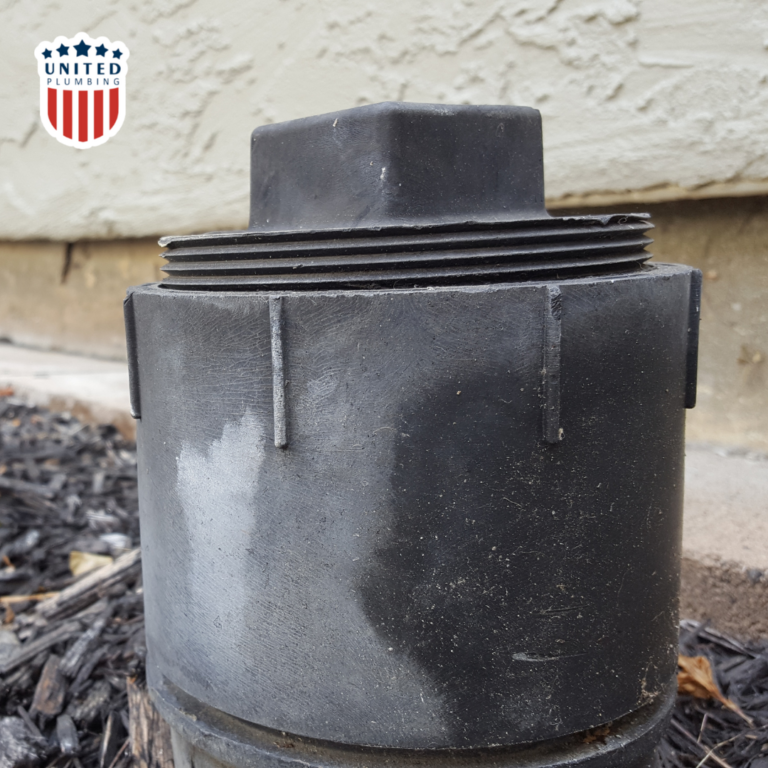
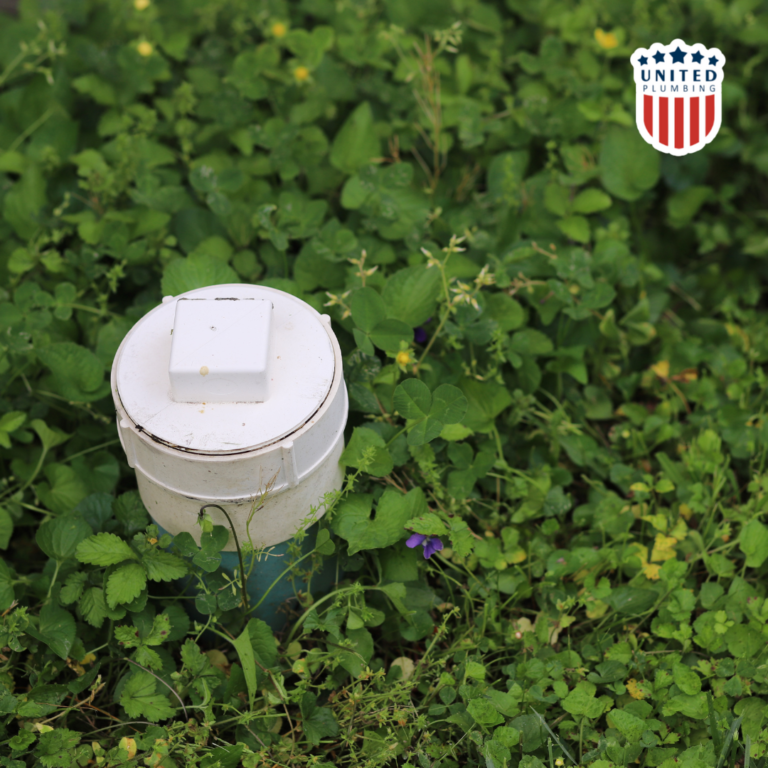
Finding the Sewer Cleanout Inside the House
The sewer cleanout inside house is typically located under the kitchen sink, utility sink, or near the main bathroom, depending on the plumbing layout. If your house has utility spaces (such as a garage, laundry room, or mechanical room), check these areas too. Some houses have indoor cleanouts near water heaters, especially if these are on exterior walls.
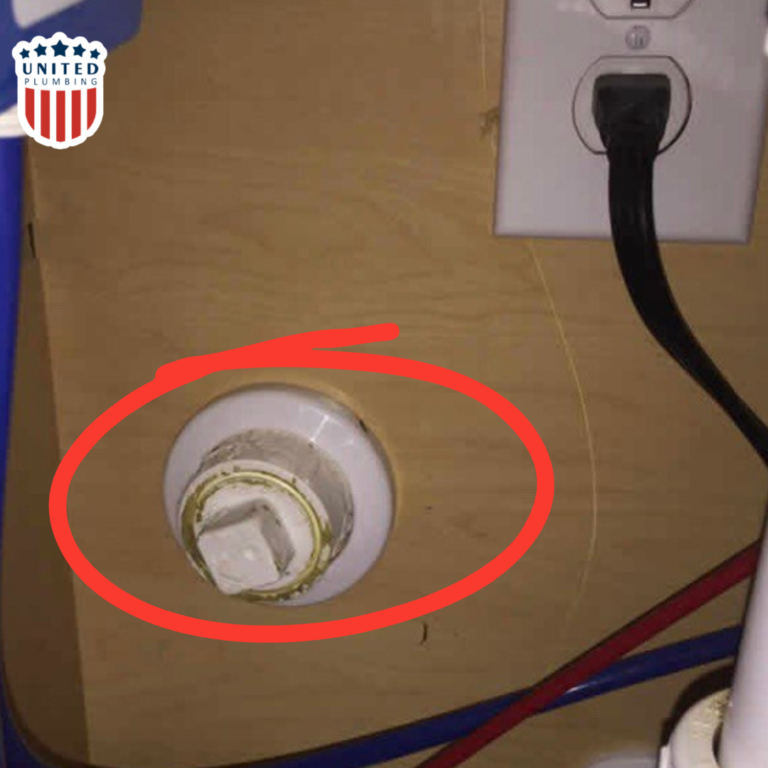
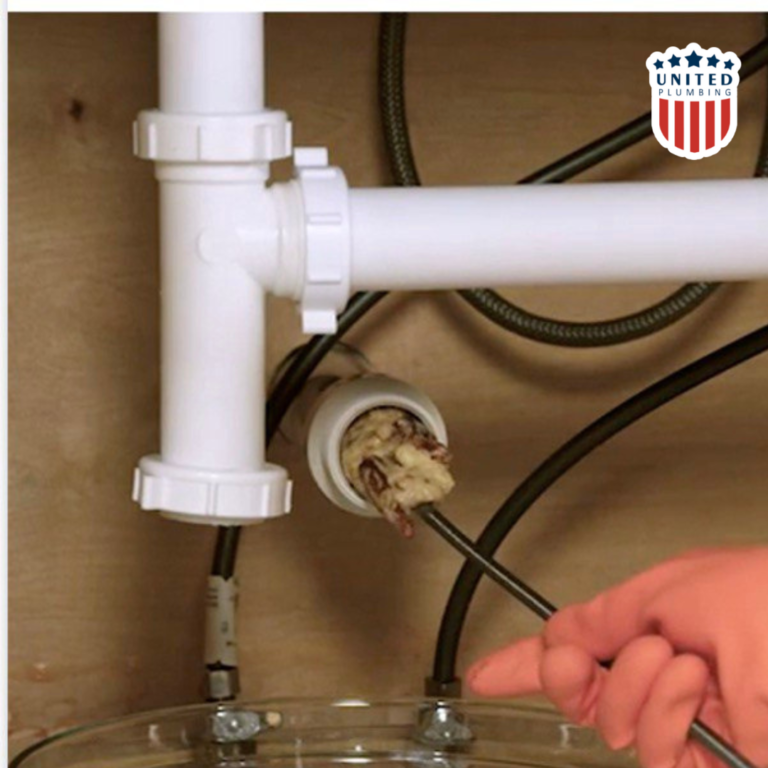
* Adopted in many U.S. jurisdictions starting in the 1990s, the International Plumbing Code (IPC) mandated provisions for cleanouts to ensure modern installations comply with accessibility standards.
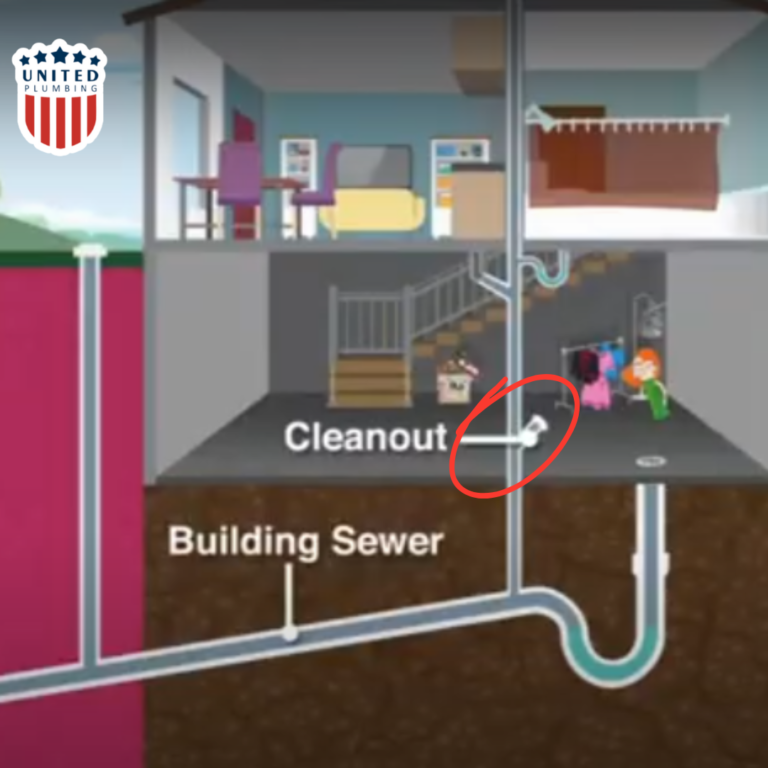
Finding the Sewer Cleanout Outside the House
If you can’t locate the cleanout indoors, it’s likely located outside. Here’s how to find the sewer line cleanout on your property:
- Look Along the Property Line: In many homes, the main sewer cleanout is placed outside along the property line, close to the street or sidewalk. This is often where the home’s sewer line connects to the municipal sewer system.
- Check Near Outside Walls: For homes with outside cleanouts, they are typically located along the foundation walls, close to the point where the main sewer pipe exits the house. Look for a round, capped pipe sticking up from the ground.
- Examine the Yard and Landscaping: In some cases, the cleanout can be hidden under landscaping elements like grass, mulch, or bushes. If you’re unsure, gently probe the ground around the suspected area. A capped pipe will typically be within a few feet of the foundation or near other utility lines.
Why Knowing the Location of Your Clean out drain is Important
Whether you’re dealing with a clogged drain or a serious blockage, quick access to the cleanout reduces repair time and costs. By knowing the location and having it ready, you ensure a smoother process when plumbing services are required, protecting your home from potential sewer backup.
You can read more in this article.
How to Maintain Your Sewer Line Cleanout
Once you’ve located your house clean out, it’s important to keep it well-maintained to ensure easy access when plumbing issues arise. Here are a few maintenance tips:
1. Keep the Area Clear of Obstructions
The area around the main drain clean out should always be clear of debris, soil, and landscaping materials to allow quick and easy access. Avoid planting shrubs or trees near the cleanout, as their roots could interfere with the cleanout or even damage the sewer lines. Trim back any overgrown vegetation.
2. Inspect the Cleanout Regularly
Periodically check the clean out drain for any visible signs of wear, cracks, or corrosion. If you notice any issues, such as a loose or broken cap, look for “plumbers near me” to replace or fix it. A damaged clean out can lead to problems accessing the sewer line when you need it most.
3. Seal the Cleanout Cap Securely
Make sure the cleanout cap is sealed tightly. If the cap is loose, it could allow sewer gases to escape or attract pests. If you notice that the cap is not sealing properly, it may need to be replaced. A plumber can also inspect the house cleanout for signs of leaks or damage.
4. Avoid Flushing Unnecessary Items Down the Toilet
Proper maintenance of your sewer line cleanout is closely tied to the health of your entire plumbing system. To prevent unnecessary clogs and backups, avoid flushing non-biodegradable items, such as wipes, sanitary products, or paper towels, down the toilet. These items can build up in the sewer line and cause major issues that may require a sewer line cleaning.
5. Schedule Regular Sewer Line Cleaning
Though it’s not part of routine cleanout maintenance, scheduling regular sewer line cleaning by a professional drain cleaning company is a good way to prevent clogs and blockages from building up in the pipes. Professional cleaning can help maintain the flow of wastewater and prevent costly repairs down the line. It’s best to have sewer drain cleaning every 18 to 24 months, or sooner if you experience any recurring issues.
When to Call a Professional Plumber
If you’ve searched both inside and outside without success, it may be time to call a plumber near me or plumbing repair specialist. A professional plumber has the tools and expertise to locate hidden cleanouts, even if they’re buried or concealed behind walls. They can also assess if your home has a sewer cleanout at all; in some older homes, there may be no cleanout access, which requires other solutions for sewer line access.
Post views: 1619
Finding and Maintaining Your Sewer Line Cleanout
What is a sewer line cleanout, and why is it important?
A sewer line cleanout is an access point for clearing blockages in your home’s sewer line. It allows plumbers to inspect and maintain the sewer line, preventing costly plumbing issues.
Where can I find my sewer line cleanout?
The cleanout is typically located outside near your home’s foundation, in the yard, or near the water meter. Some homes also have one inside, usually in the basement or utility room.
How can I identify the cleanout?
Look for a capped pipe about 3–4 inches wide. Outside, it may be near your home’s foundation; inside, it might be sticking out of the floor or wall.
How often should I inspect or maintain the sewer cleanout?
Inspect your cleanout every few months. Ensure the cap is tightly sealed and check for any cracks or damage to the pipe.
What are some maintenance tips for my sewer line cleanout?
Keep the area around it clear of debris, tightly seal the cap, and avoid planting trees nearby to prevent root interference. Regular maintenance keeps the cleanout accessible and the line clear.
When should I call a plumber to inspect my sewer line?
If you notice foul odors, slow drains, or recurring blockages, it’s best to call a plumber to inspect your sewer line and cleanout for potential issues.
Latest posts

Electrical Panel Upgrade California: Costs, Safety & When You Need One
An electrical panel upgrade in California is one of the most important safety and performance improvements a...

Coldest winter for Bay Area in 2025 And What Your HVAC System Should Actually Be Doing
If your home feels colder than usual this winter, you’re not imagining it. Bay Area home heating systems are being...


If you still have questions or need advice, please leave a request and we will contact you as soon as possible
Need a plumber and got no clue where to start?
(408) 539-6936Facing a plumbing issue? Get a FREE in-person estimate and quick solutions from our skilled technicians, ensuring your home runs smoothly again!
